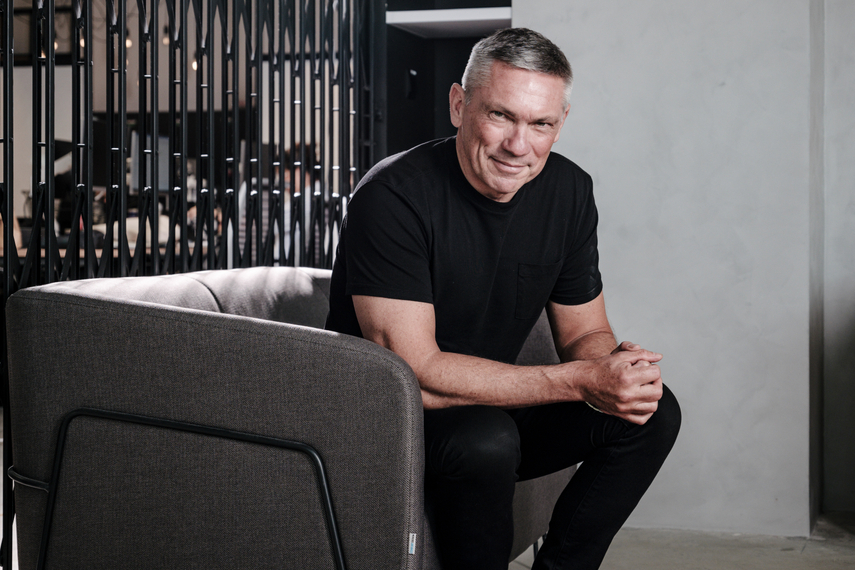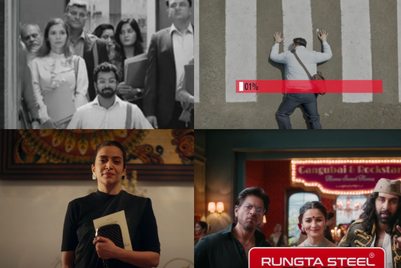
There’s probably no one better to ask about the changing nature of industry work than Andrew Robertson. When you’ve been the global president and CEO of the agency that is famously obsessed with “the work, the work, the work” for nearly twenty years, you will learn a thing or two about the evolution of brand communication.
He remembers vividly his first BBDO Worldwide meeting as CEO in 2004, deliberately held in Los Angeles at the intersection of advertising and entertainment to herald a new era of work for agencies. The meeting was all about how branded entertainment was going to change marketing and evolve brand-consumer communication forever.
“Literally while we were having that meeting, Mark Zuckerberg was in his dorm in Harvard inventing Facebook,” Robertson recalls, speaking with Campaign on a recent trip to Singapore.
While Robertson asserts that the ever-changing nature of the work is one of the joys of the business, it’s becoming increasingly difficult to love and celebrate work in the same way, when most advertising agencies prefer to be known as business solutions partners and finely crafted films around big ideas are increasingly viewed as a brand vanity projects.
Robertson himself has been vocal in decrying the lack of “breathtakingly brilliant mind-blowing work” at global festivals coming out of the pandemic, calling on his agency and the industry at large to set a higher ambition for the work. But these days, is anyone in adland listening? It seems such calls to action are being drowned out by a higher-pitched buzz about creative efficiencies through artificial intelligence.
So in today’s world of creativity, what exactly is the work we need to elevate and celebrate?
In Robertson’s mind, it all goes back to delivering what consumers expect from brands throughout ongoing changes in technology and circumstance.
“I believe what they want and expect is effortless, seamlessly connected experiences–that are ideally magical–through what are increasingly non-linear purchase cycles.”
Believing that sales funnels are outdated in a world of two-click purchases (he started a ‘Sh*t I bought on Instagram’ Facebook group during the pandemic), Robertson said their job is now to map out all the different purchase journey possibilities and from a foundational brand idea “create experiences at all the relevant intersection points that can be truly magical.”
“Why do I put the premium on them being truly magical? Because the effect is exponential,” he explains “The impact on the result is exponential.”
Here is the future of brand work. Magical moments that appear at the right time in a customer’s experience.
Mind the weather
To explain, Robertson retells one of his favourite examples of a personal brand experience he most envies over the last few years. It was a text message he received from American Airlines in LA before flying back to New York that told him he might want to pack an umbrella or think about travelling another day as there were storms and possible delays at his destination.
“All the clever stuff that has to happen to get the right message to the right person at the right time in the right context had been done,” he says. “What was magical was making me smile when you’re giving me really bad news.”
The next day when his flight was diverted on arrival and sat on a DC runway for hours, Robertson says he felt amazed at how calm he was while other passengers cursed and tore their hair out. He wondered if the previous day’s text message was what helped to deal with the situation. “I concluded it was.”
“That’s the power you can create in an experience as mundane as a text message about the weather,” Robertson says. “That’s the thing I find most exciting as we move forward. Once we’ve automated and mapped out everything for the user, how do you create that value attachment and behaviour that money can’t buy. That’s what our business is.”
Is it time then for the industry to change the way it celebrates creativity in this new customer experience realm? Already there are CX awards and Creative Commerce categories. Will adland pack the Palais to see ‘the best brand text message’ category one day?
"For me the celebration is the cherry on the cake, not the cake,” says Robertson who nontheless confides he’d love to see an award show simply around the ‘most magical work’ in each consumer vertical.
Cooking up magic with AI
If the focus remains on making magical cakes, BBDO’s bakers, like those of other creative agencies are now able to work from fully automated kitchens with upgraded next-generation appliances. After upskilling staff on major platforms during the pandemic, new generative AI tools are speeding up the creative process.
Robertson is a believer in automating everything that can be automated to create the capacity to do more of the things that can’t be automated. He’s particularly keen on AI’s ability to generate visual tools as a means “free ourselves from the constraints of stock footage and stock photos” to create work that is more interesting in a more affordable way in terms of money, time and effort.
He’s surprised though, by the amount of attention given to text creation through tools like ChatGPT. Like everyone, he’s amazed by its incredible speed, but is also just as aware of its creative limitations.
“The essence of creativity is to create something new, something surprising. But by definition, the way AI works doesn’t do that. What it does is search, edit and reassemble brilliantly,” he says.
“But if you go on ChatGPT and say: ‘Write me a 30-second radio commercial or television script for Snickers using the campaign idea You’re not you when you’re hungry featuring Taylor Swift and Jimmy Fallon and make it funny’, you don’t get much back.”
AI is not going to provide magic. But it will allow more time and space to create it.
“That’s certainly how we’re approaching it within our agencies,” Robertson says. “This is going to exist. The question is how can we make it a big positive.”
(This article first appeared on CampaignAsia.com)


.jpg&h=334&w=500&q=100&v=20250320&c=1)

.jpg&h=334&w=500&q=100&v=20250320&c=1)

.jpg&h=334&w=500&q=100&v=20250320&c=1)



.jpg&h=334&w=500&q=100&v=20250320&c=1)
.jpg&h=334&w=500&q=100&v=20250320&c=1)

.jpg&h=268&w=401&q=100&v=20250320&c=1)


.jpg&h=268&w=401&q=100&v=20250320&c=1)
.jpg&h=268&w=401&q=100&v=20250320&c=1)


